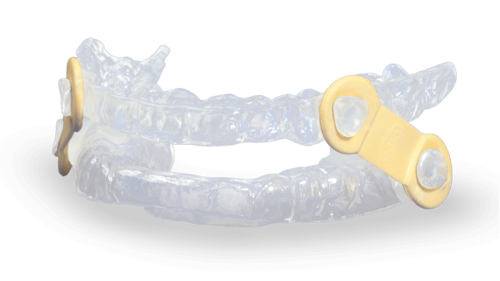
I decided to spring for it when I found I could get a Myerson EMA. I think they are under-rated as a product. My OSA was killing me, though, so I finally tried a mandibular advancement device, despite the bad press they get, and it has done wonders. But my stomach just couldn't tolerate it, after trying all possible adjustments, modifications, and medical palliatives. I was fine with wearing a mask-having worked in surgery for years I have no problem with a mask. The AASM has called for more research on the safety and efficacy of medical cannabis and any synthetic extracts for OSA, and is not recommending such therapy at this time.Brief background: Couldn't make CPAP work for me for a couple of reasons.

Research published last year in the Journal of Clinical Sleep Medicine suggested that dronabinol, a synthetic cannabis compound, relieved OSA symptoms in a small subset of people. For moderate to severe apnea, some people may find relief with a surgically implanted device that delivers electrical impulses to the nerve that controls the upper airway muscles. Mandibular advancement devices (mouth guards) to help keep the airway open may benefit some people with mild to moderate OSA but may be less effective than CPAP. Those who can't tolerate CPAP have other options.

"It may take a few trials to find what works," Dasgupta says. You might need help adjusting settings, or the mask simply might not be a good fit. If you still have trouble after this, tell your sleep specialist. If you do, start by wearing it for a half-hour during the day, increasing the time slowly over weeks until you're comfortable putting it on at night. Some find the mask uncomfortable or hard to use. But a 2016 review of studies found that roughly one-third of people don't. Your doctor is also likely to recommend continuous positive airway pressure (CPAP), a type of therapy that uses a mask connected to a pump that pushes air into your airway, helping to keep it open while you sleep.ĬPAP can cut the number of apnea episodes, lower blood pressure, improve sleep quality, and reduce daytime sleepiness-if you stick with it. Lifestyle modifications-particularly weight loss if you are obese, or changing your sleep position-can help. show the breathing symptoms of sleep apnea, according to the American Academy of Sleep Medicine (AASM).Īnd some people with OSA don't know they have it: A 2018 study of older adults from the University of Michigan found that 56 percent of participants were at high risk for OSA, yet only 8 percent were tested for it. About 24 percent of men and nine percent of women in the U.S.

In terms of sheer numbers of people with OSA, the study found that the U.S., with an estimated 54 million cases-24 million of them moderate to severe-is second only to China.

The condition appears to be common: A new study published online in The Lancet Respiratory Medicine estimates that 936 million people between age 30 and 69 worldwide have OSA-and 425 million of the cases are thought to be moderate to severe. (The study was funded by ResMed, a manufacturer of devices to treat sleep apnea.) O bstructive sleep apnea (OSA), marked by numerous pauses in breathing during sleep, can cause daytime drowsiness and boost heart failure, stroke, and dementia risks.


 0 kommentar(er)
0 kommentar(er)
